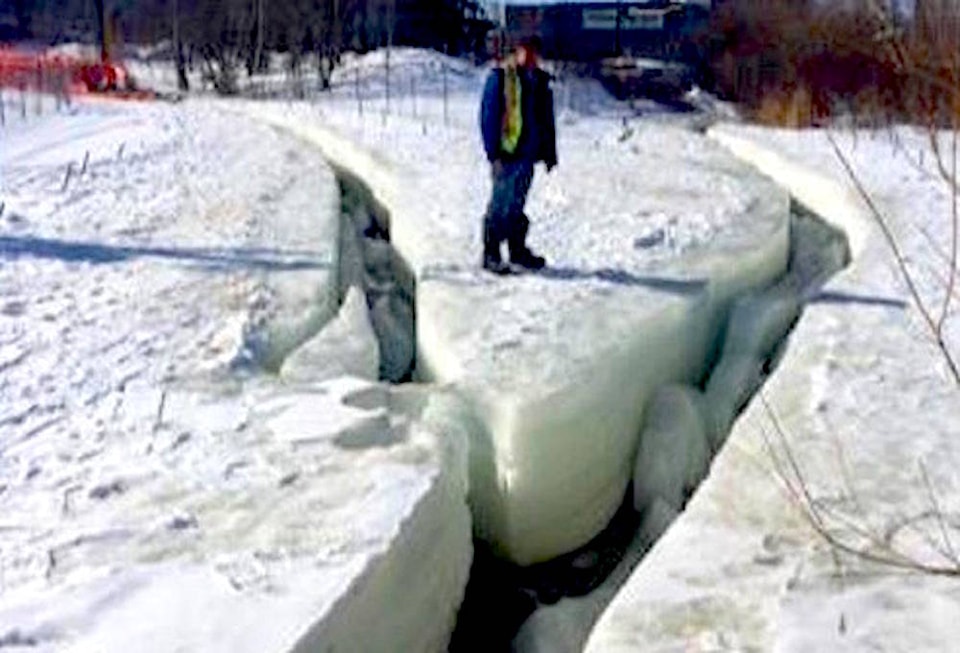A massive flood in downtown Red Deer was averted last spring by fast-acting and innovative city workers, city council has heard.
Upon discovering that flow from a broken water main had created ice as thick as 2.6 metres on Waskasoo and Piper creeks, public works staff began a major undertaking to carve a 300-metre channel in the ice to allow a path for spring runoff.
The project, which took more than a month to complete south of the Baymont Inn and the downtown Safeway, was revealed to city councillors during budget discussions.
Corporate services director Lisa Perkins listed the channel carving among 80-plus innovations and efficiencies that city staff had undertaken in 2018 or were planning for 2019.
Less dramatic measures include expanding the popularity of the electronic billing site to save $30,000 in mailing costs and adding solar panels to the Sorensen transit station roof to power the parkade.
“The work city staff do is amazing,” said Perkins — both everyday efforts to boost efficiency as well as “grand-scale projects” such as the flood mitigation.
As the winter of 2018 began to wane, staff from the city’s public works, environmental services and parks departments collaborated with Alberta Environment on ways to prevent “a massive flood” in the downtown.
Public works manager Greg Sikora recalled, “The creeks usually build an ice thickness of three feet, but we saw a thickness of six to eight feet” because of additional waterflow from a broken water main.
With rising temperatures causing fast snowmelt, a channel needed to be opened in the two creeks, or spring runoff would spill onto downtown roads, parks and commercial properties, causing hundreds of thousands of dollars in damage.
For the first time, city workers opted to try using a zip thaw line — a flexible hose that heats up — to melt the thickened ice along Piper and Waskasoo creeks. Sikora said the hose is usually used to thaw frozen ground for construction projects, but worked just as well on ice.
A 1.5-metre-wide channel was eventually opened in the frozen creeks. But as there was still flooding danger, sand bags were added along creek banks between 48th Avenue and Gaetz Avenue, said Sikora, necessitating a road closure.
Fortunately, these combined measures prevented a widespread flooding disaster. Sikora said the city intends to keep a closer eye on frozen creek culverts and water mains to ensure this scenario doesn’t repeat.
According to Perkins, other efficiencies and innovations undertaken by city staff include:
* Enhanced short-term counselling assistance to first responders to reduce mental health problems from post-traumatic stress, as well as workers’ compensation claims;
* Greening of city transit vehicles to reduce fuel costs by $160,000 and reduce carbon dioxide emissions;
* More in-house engineering work, done without consultants, to save between 30 to 50 per cent on various projects;
* Lessened meetings in the parks department to reduce staff travel time and boost productivity;
* Using a tool that assesses which sewer lines are blocked and which aren’t, saving staff time and effort. Previously, every line was regularly flushed.
lmichelin@reddeeradvocate.com
Like us on Facebook and follow us on Twitter
